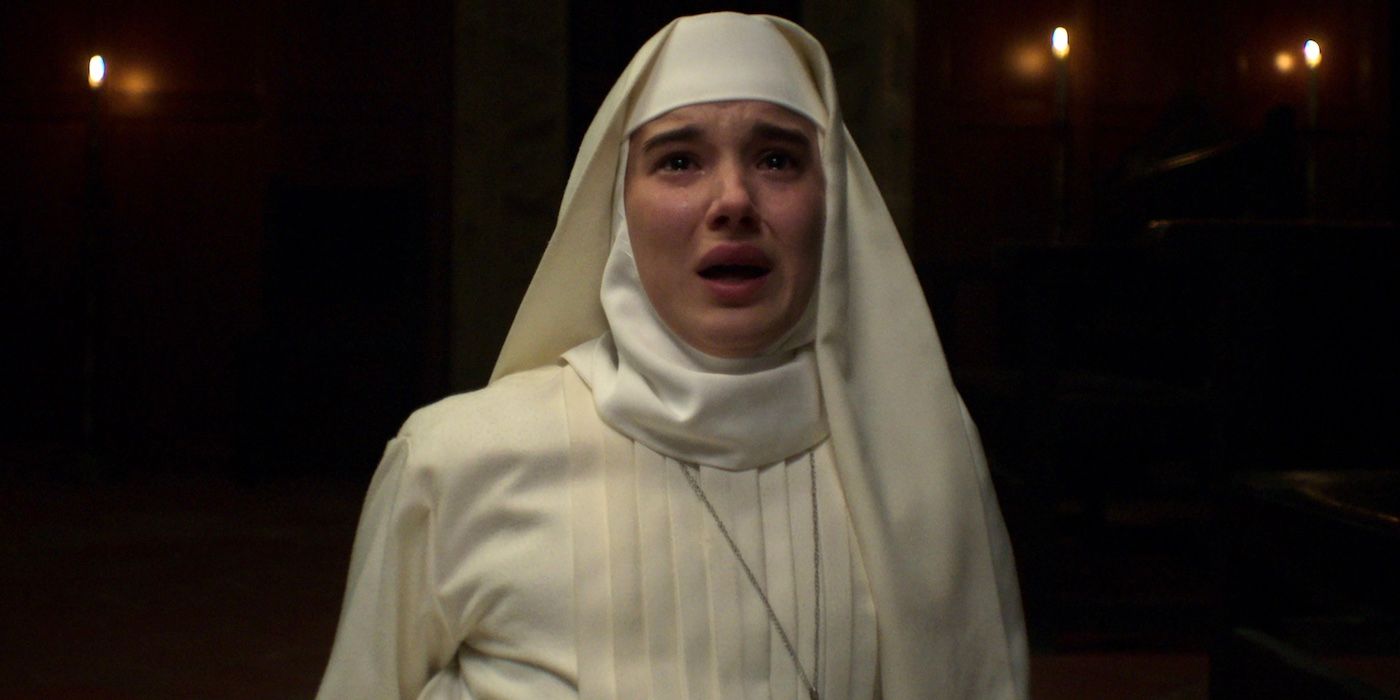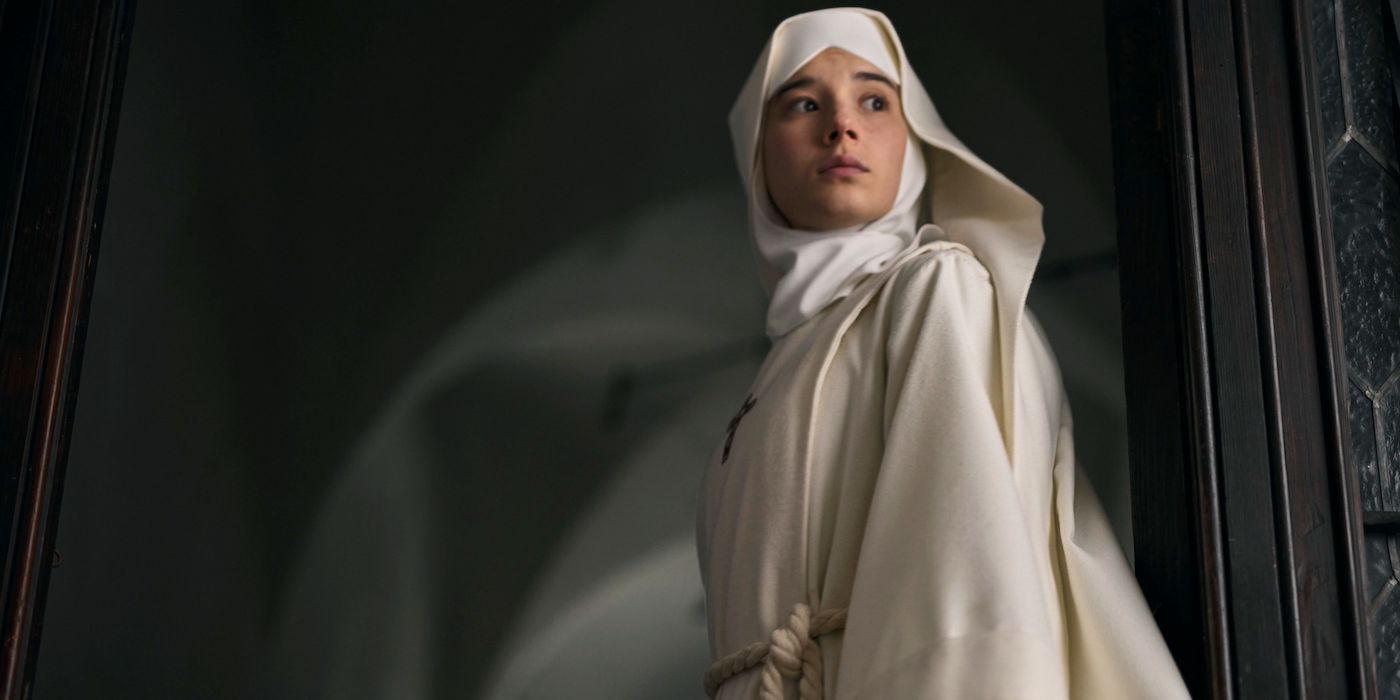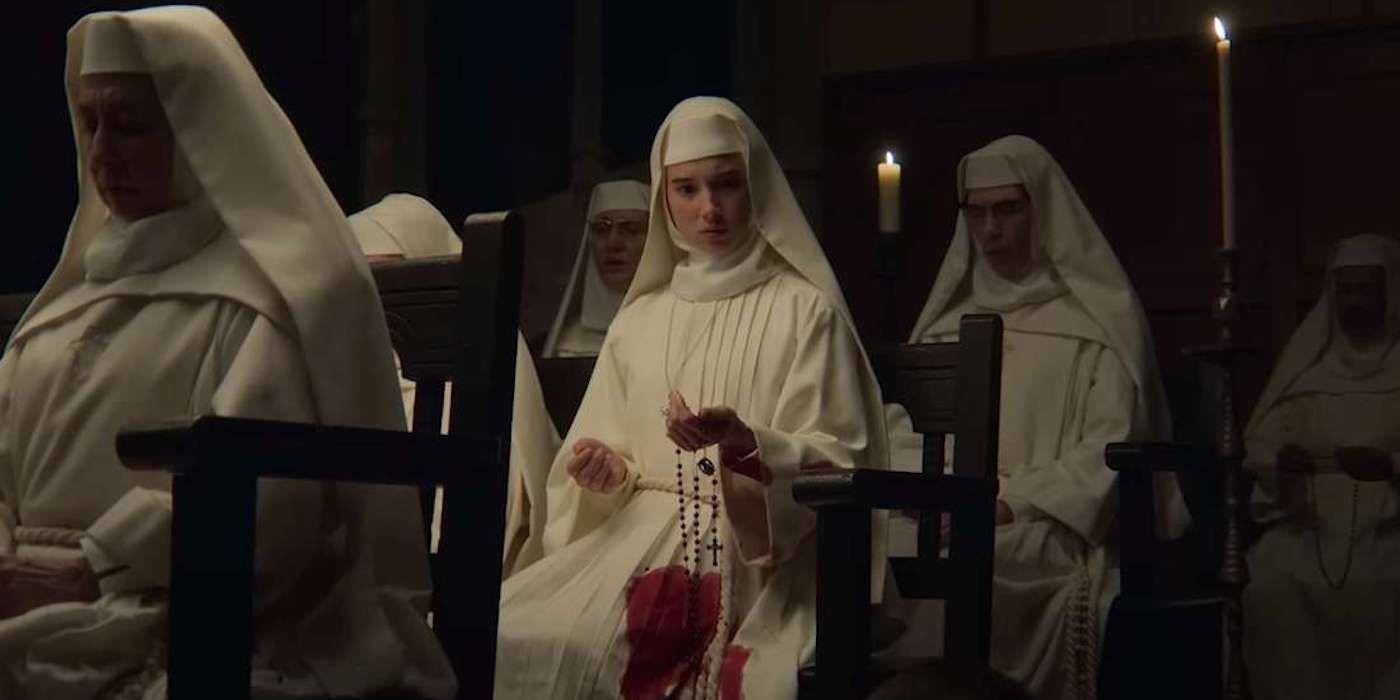
The Enigma of 'Sister Death': Unveiling the Haunting Mystery within the Convent

Unveiling the enigmatic tale of 'Sister Death', this article explores the haunting mysteries of the convent and delves into the profound connection with Sister Narcisa Discover the aftermath of Narcisa's departure and decode the profound meaning behind the final scene
Editor's Note: The following contains spoilers for Sister Death.
Article Summary
Sister Death is Netflix's prequel to the movie Veronica, which centers around Sister Narcisa and her initial experience with the spirit realm. The film delves into Sister Narcisa's struggle with her faith as she uncovers unsettling secrets and unusual occurrences within the convent she becomes a part of.
In Netflix's Sister Death, directed by Paco Plaza, the final scene unveils the truth behind Sister Narcisa's visions and her restored faith. She confronts the Mother Superior and liberates the spirit of Sister Socorro. This film serves as a lighter prequel to Veronica, a sleeper hit from 2017. Sister Death is the peculiar character who made a brief but impactful appearance in Veronica as an eerie presence known as "Sister Death." Despite her elderly, blind state, she delivered unsettling advice to the main character, Veronica, after a game involving a Ouija board awakened malevolent spirits. This cameo scene sparked the interest of fans, leading to Sister Death being given her own movie. In this new production, viewers are provided with insight into the origins of this haunting nun and her initial encounter with the spirit realm.
The final scene of Sister Death is a nostalgic reference to Veronica. In this scene, Sister Narcisa, now elderly, is invited to address a classroom filled with teenage girls. Among these girls is Veronica herself, who becomes intrigued when one of her friends refers to Narcisa as "Sister Death" upon seeing her. The girls perceive Narcisa as intimidating and nearing the end of her life due to her old age and blindness. Little do they realize that Sister Narcisa possesses a life story that aligns perfectly with her epithet – a story that we, the audience, are granted insight into in Sister Death.
What Is 'Sister Death' About?
Image Via Netflix
In the midst of the Spanish Civil War's final stages, in 1939, the captivating tale of Sister Death unfolds. Nestled within a rural village, a young Narcisa (Ainoa Hernández) is blessed with profound visions of Saint Mary, the revered mother of Jesus, earning her the honorable title of "Holy Girl of Peroblasco." A decade later, we encounter Narcisa once again, now a blossoming novice who joins a convent doubling as an institution for impoverished young girls. This newfound sanctuary warmly embraces Narcisa, with the Mother Superior (Luisa Merelas) expressing gratitude that the Holy Girl will soon take her lifelong vows within their sacred walls. Unbeknownst to them, however, Narcisa finds herself grappling with a crisis of faith, questioning the authenticity of the divine apparition she witnessed as a child.
New layers are added to Narcisa's doubts about her beliefs as she realizes that there is something being concealed from her by the convent. In her room, she discovers a photograph of a deceased nun, Sister Socorro (Almudena Amor), which consistently causes a chair to topple to the ground whenever she gazes upon it. Bizarre, unfinished illustrations of a man being hanged manifest on the walls, and marbles materialize out of thin air as if beckoning Sister Narcisa to engage in a game. Additionally, the young nun is tormented at night by banging noises at her door, and when she finally manages to sleep, she is plagued by terrifying nightmares.
What Is Haunting the Convent in 'Sister Death'?
While the other nuns appear oblivious to the happenings, their behavior often suggests that something is amiss. However, the girls under Narcisa's tutelage provide an explanation for the enigmatic occurrences at the convent. They believe that the place is haunted by the spirit of a girl their own age, capable of ending lives by inscribing their names. Engaging in her games is considered a dangerous endeavor, unless one desires to meet their demise.
When Narcisa reports these stories to her superiors, she is dismissed and accused of fabricating them in an attempt to regain her childhood fame. Sister Julia even goes as far as suggesting that she is involved with the devil. The situation worsens as the spirit of a girl writes Rosa's name on the chalkboard, foretelling her imminent death. Terrified, Rosa seeks comfort from Sister Narcisa, who asks for her help in contacting the spirit. Together, they complete the drawing created by the girl in Narcisa's room, but someone other than the girl emerges.
While Narcisa insists that there is no one present, Rosa reveals that there is indeed a ghost of a woman standing right behind her. This ghost tells Rosa something that horrifies her, causing her to flee the room and disappear. Confused and desperate, Narcisa seeks assistance from Rosa's sister, Elvira, in locating her. However, it is too late: Rosa is found dead, hanging inside the church's confession booth. Blamed by Sister Julia for the tragic loss of the young girl, Narcisa makes the decision to depart from the convent.
What Happens After Narcisa Leaves the Convent?
Image Via Netflix
As Narcisa departs from the convent, the moon's eclipse of the sun takes place, a phenomenon she had recently discussed with her students. Despite cautioning against directly observing an eclipse, Narcisa's gaze is irresistibly drawn upward. Instantly, she is struck blind by the peculiar light, yet it also unveils the concealed truths concealing the convent. On her knees, fixated on the sky, Narcisa unearths the actual events that occurred within the convent and the identity of the elusive child haunting its residents.
Through her visions, Narcisa witnesses a period during the war when Republican soldiers, opposed to Franco's regime, had seized control of the convent. Images of these men desecrating saintly figures and keeping the other nuns captive alternate furiously before her eyes, until she is confronted with a distressing sight: a soldier violating Sister Socorro. Consequently, Sister Socorro became pregnant as a result of the assault and clandestinely delivered a baby girl within the convent's walls. Heartbreakingly, this child, by the collective decision of the nuns, would forever remain hidden from the outside world, unbeknownst to her existence.
This becomes a problem when Daniela Casas, the girl, falls ill, and Socorro insists on taking her to a hospital. However, the other nuns deny her request and take the child away from Socorro, believing they can heal her themselves. In an attempt to reduce her fever, they place the girl in a cold bath, but their rough handling and lack of carefulness cause the girl to hit her head on the tub. The girl begins to bleed profusely and tragically passes away. Overwhelmed by the loss of her daughter, Socorro tragically ends her own life by hanging herself. This explains why Narcisa's chair constantly topples to the ground – Socorro's act of kicking it to finally find peace in death. The banging on the door, while she was locked in her room, represents Socorro's desperate struggle to reclaim her daughter.
What Does 'Sister Death's Final Scene Mean?
Image Via Netflix
Rescued by the sisters, Narcisa is brought back to the convent where her burnt eyes are attended to. But now aware of the truth, she can no longer remain silent. Confronting the Mother Superior about the dark secrets of the convent during the war, Narcisa emerges from her room and releases the trapped spirit of Sister Socorro, who had been desperately banging on the door for nearly a decade. In doing so, she also liberates Socorro from her torment in the past, prompting the vengeful spirit to punish the Mother Superior. Socorro drowns her in a tub filled with her own daughter's blood in the past, while simultaneously causing her to cough up blood in the present. Meanwhile, Sister Julia is haunted by haunting images of shattered saints in both time periods.
Interpreting this scene as time travel is not accurate. The scene suggests that Narcisa, by uncovering the truth and revealing it, destroyed the fabricated history created by the sisters. This interpretation pertains to the theme of the story. The nuns are killed by the very thing they sought to conceal, represented by the drowning in the bathtub symbolizing the girl's death, and the broken saints representing the tragic past of the convent. However, in terms of the plot, Socorro's revenge should be viewed as operating on a spiritual level. Since she is a ghost, her actions can only affect the past, but they have consequences in the present.
Similar to the unearthing of history, Narcisa's crisis of faith is a significant theme in Sister Death. Despite remaining a nun until the time of Veronica, it is evident that she somehow overcome it. But what does the conclusion of Sister Death reveal about Narcisa's beliefs? Before transitioning to Veronica's classroom, we witness visual representations of what Narcisa witnessed as a young girl in Peroblasco. First, we see Narcisa miraculously observing Socorro holding her child in her arms, enveloped in a bright light in the convent's bathroom. Then, we flashback to Narcisa's childhood, with the movie utilizing the same old-fashioned visual effect employed for 1939, and we once again witness the image of Socorro and her daughter.
The convent was invaded in 1936 during the Spanish Civil War, but the exact time of Socorro and her daughter's death remains unknown. However, the film strongly suggests that the image Narcisa saw in the sky was Socorro holding her baby, rather than Mary and Jesus. If this is true, then Narcisa has spent her entire life dedicated to uncovering their truth. Therefore, her faith is not restored by realizing she was truly contacted by Our Lady, but by discovering she had a purpose all along, even if it was not as divine as she once believed.
You can stream Sister Death on Netflix.
Editor's P/S
In the final scene of Sister Death, Sister Narcisa, now elderly, is invited to address a classroom filled with teenage girls. Among these girls is Veronica herself, who becomes intrigued when one of her friends refers to Narcisa as "Sister Death" upon seeing her. The girls perceive Narcisa as intimidating and nearing the end of her life due to her old age and blindness. Little do they realize that Sister Narcisa possesses a life story that aligns perfectly with her epithet – a story that we, the audience, are granted insight into in Sister Death.
This scene is a full-circle moment for Sister Narcisa, as she has come to terms with her past and is now able to share her story with others. It is also a reminder that even though she is old and frail, she is still a powerful force to be reckoned with. Sister Narcisa is a complex and fascinating character, and her story is one that will stay with you long after the credits have rolled.









